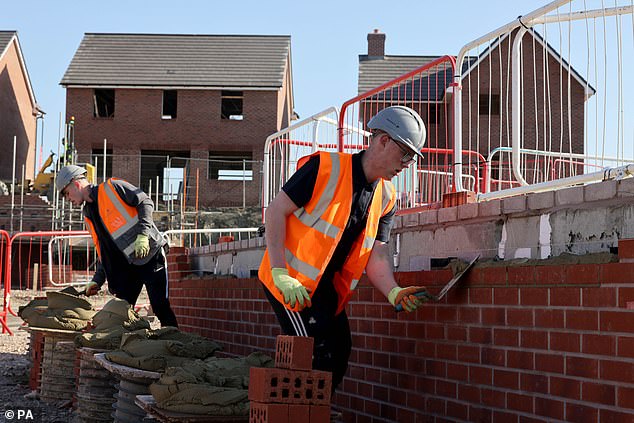Housebuilding has fallen for 11 months in a row as high borrowing costs hit demand for new homes.
S&P Global said its index of activity in the UK construction sector – where scores below 50 show contraction –came in at 45.6 in October.
That was up slightly from 45 in September but still the second weakest reading since May 2020 during the depths of the Covid-19 pandemic.
The slump was steepest in house building followed by civil engineering.
The analytics group’s report noted ‘signs of stabilisation’ in commercial building.

Slowdown: S&P Global said its index of activity in the UK construction sector – where scores below 50 show contraction –came in at 45.6 in October
‘Falling work on residential construction projects was widely linked to a lack of demand and subsequent cutbacks to new projects,’ the report said.
On a more positive note, builders saw the cost of doing business fall at the fastest pace for 14 years, with the price of materials such as timber and steel, as well as transportation, on the slide.
The Bank of England has raised interest rates from a record low of 0.1 per cent to a 15-year high of 5.25 per cent since December 2021 in a battle to get inflation under control.
That has pushed up mortgages, and while it is hoped interest rates have peaked, a cut is not expected until well into next year.
Higher borrowing costs have slammed the brakes on the housing market with builders scaling back construction plans as a result.
John Glen, chief economist at the Chartered Institute of Procurement & Supply, said: ‘The silver lining is that high borrowing costs are having their intended effect of putting the brakes on rising inflation.
‘However, there is no doubt that UK construction is in a difficult period and there will likely be further challenging months to come.’










